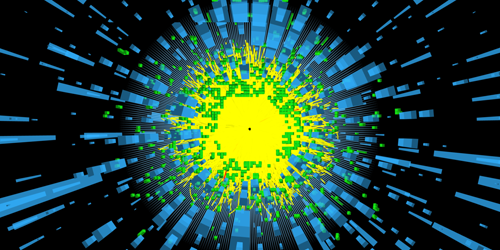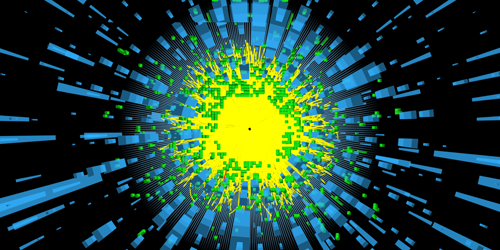Splitting the Jets
Physicists collide heavy nuclei to create a quark-gluon plasma (QGP)—a state of matter thought to have filled the Universe shortly after the big bang. These collisions also produce high-energy quarks and gluons (collectively called partons) that later form jets of hadrons, such as pions and kaons. A study by the CMS Collaboration at the Large Hadron Collider indicates that jet measurements may reveal some of the QGP’s effects on the partons, the jet precursors. This approach may lead to a new way to probe the QGP.
Each of the high-energy partons emerging from the collisions can generate two or more partons through a splitting process similar to the production of an electron-positron pair from a high-energy photon. While this splitting cannot be directly observed, the researchers set out to demonstrate that jet measurements could indirectly provide information on the splitting.
The team analyzed data from lead-lead and proton-proton collision experiments from 2015. For each experiment, they reconstructed the structure of “subjets” of particles within the jets. From these data, they determined a parameter that quantifies how the momentum is shared among the partons that participate in a splitting event. The difference between the parton splitting parameters of the lead and the proton cases showed that the parameter depends on the medium in which the partons propagate. And since a QGP is expected to be generated only by lead-lead collisions, the medium-dependent parameter could also reveal QGP effects on partons, which could then be turned around to characterize the QGP.
This research is published in Physical Review Letters.
–Matteo Rini
Matteo Rini is the Deputy Editor of Physics.





